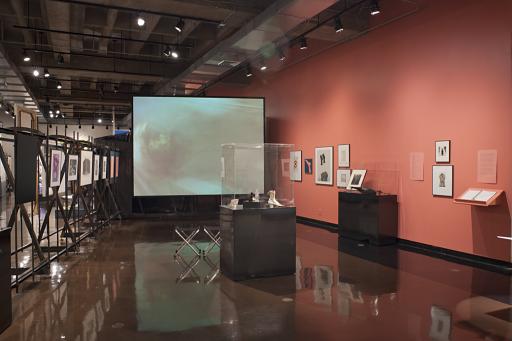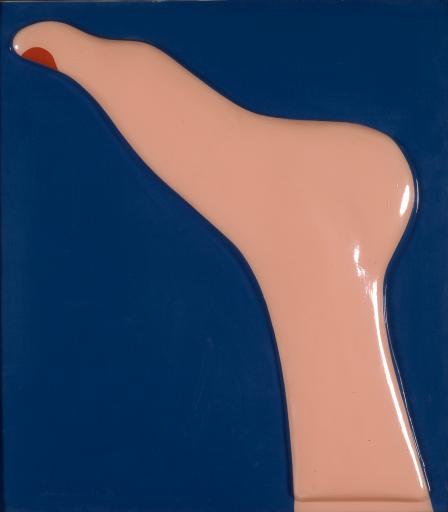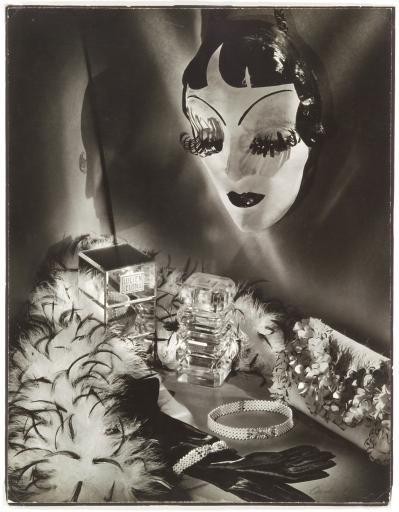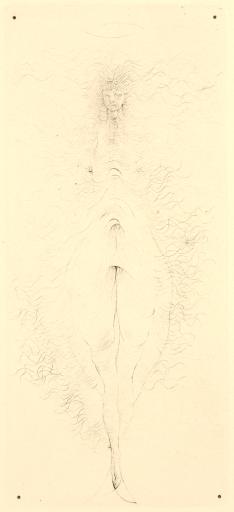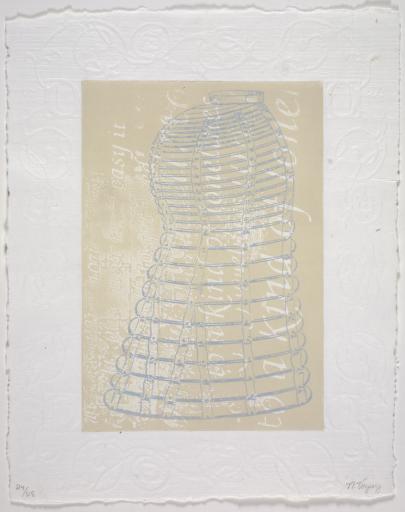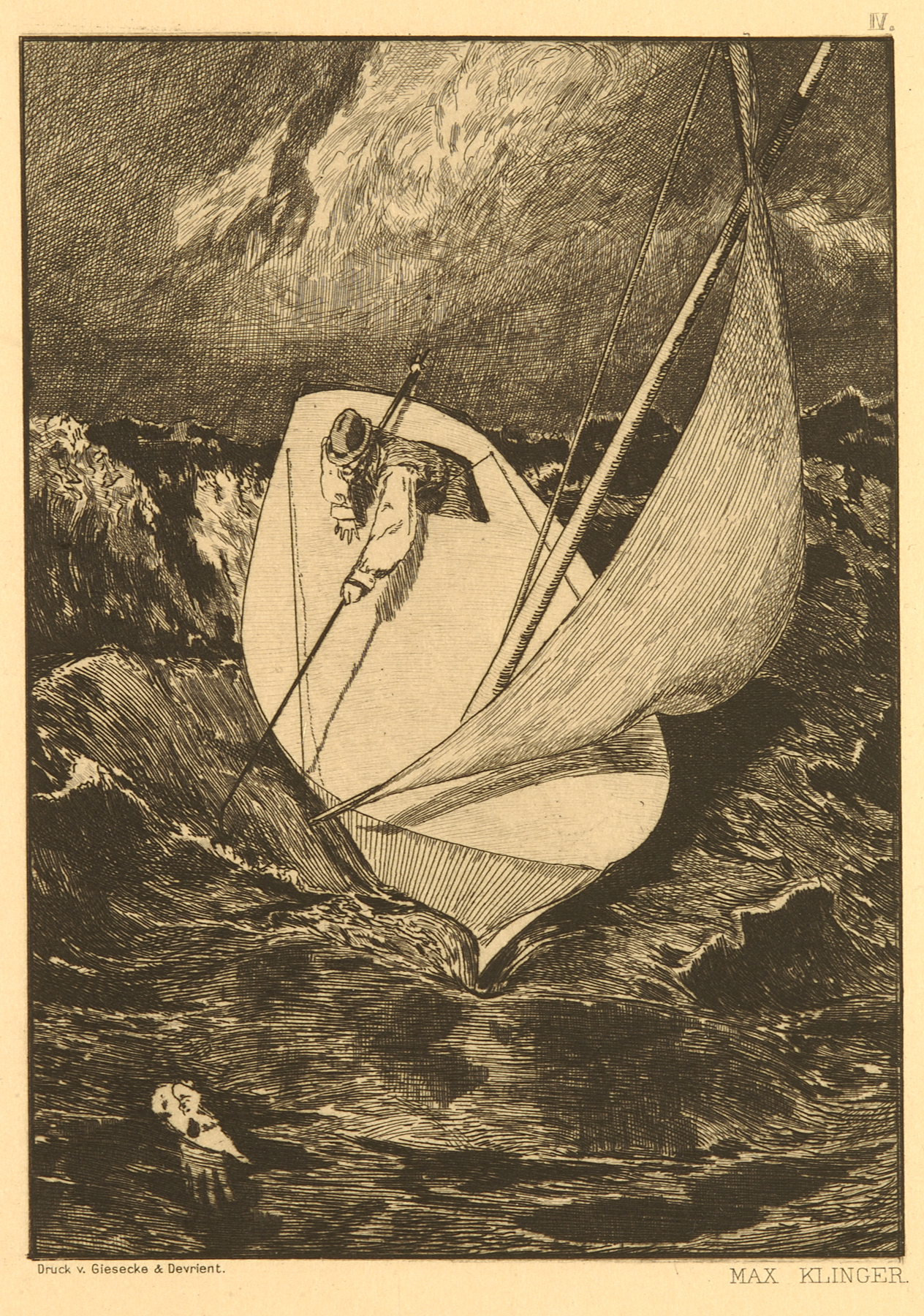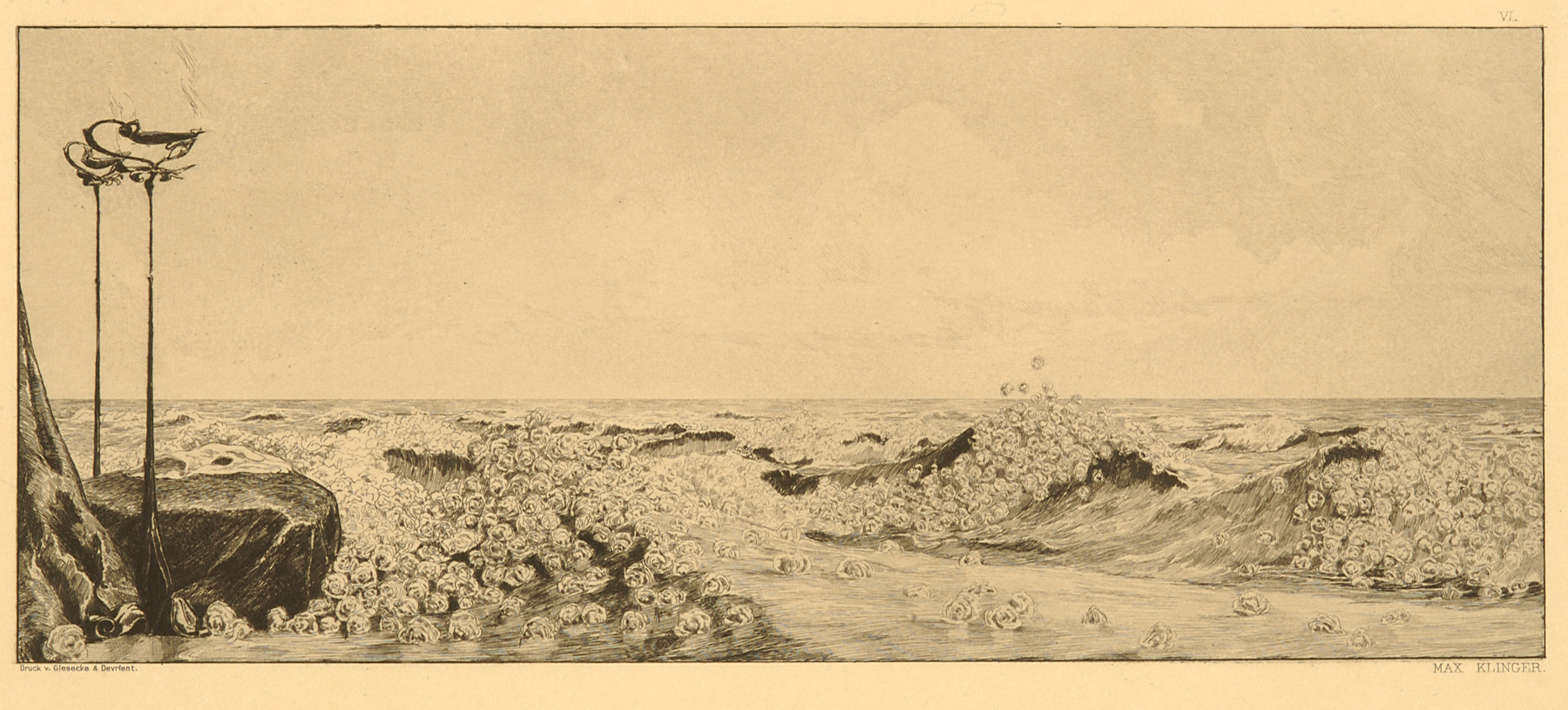Conversation VI: Unbinding the Fetish
Exhibition Overview

What is a fetish? How has the meaning of the term changed in our contemporary world? How do our perceptions of fetishes influence our interactions with the material world, other people, and even ourselves? Drawing on works from the Spencer’s permanent collection, Conversation VI: Unbinding the Fetish examines evolving perspectives on the fetish by exploring the relationship between the body and the object.
detail: Handlung (Action) by Max Klinger
The first section focuses on Max Klinger’s nineteenth-century graphic narrative, The Glove. Casting himself as the protagonist of this etched series of vivid dreamscapes, Klinger illuminates dual aspects of the fetish: body and object. As the narrative progresses, a man grows obsessed with a woman’s lost glove, which operates both as the fetishized “object” and the desired “body” of the glove’s absent owner. His obsession with the glove moves the viewer beyond the public realities of a nineteenth-century skating rink into the private fantasies of a tortured young man’s psyche.
detail: Seascape by Tom Wesselmann
The second section complicates the issues presented in The Glove. Our current understanding of the fetish relies heavily on the psycho-sexual research of Richard von Krafft Ebing (1840-1902), who observed that fetishism is “the association of lust with the idea of certain portions of the female person, or with certain articles of female attire.” But is fetishism limited to a shoe, or a glove for that matter? Or is it about the foot? Perhaps fetishism is about something else entirely?
In her book, Cultures of Fetishism (2006), Louise J. Kaplan offers an alternative that transcends psychological notions of the fetish. For Kaplan, fetishism is a “strategy” for creating control and meaning. As part of this strategy, individuals or segments of society render the immaterial or “Other” into something material and tangible, effectively transforming ambiguity and uncertainty into something knowable and stable.
Through the inclusion of multiple voices-comprising material objects and relevant texts-Unbinding the Fetish seeks to inspire viewers to form for themselves additional interpretations and understandings of the fetish that will extend the discussion beyond the scope of the Spencer’s current Conversation.

